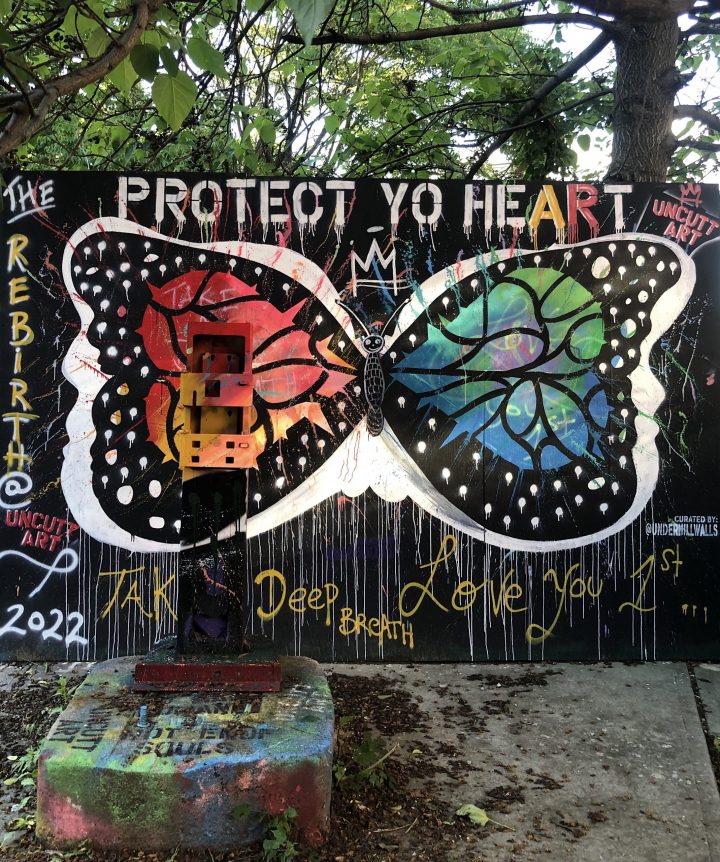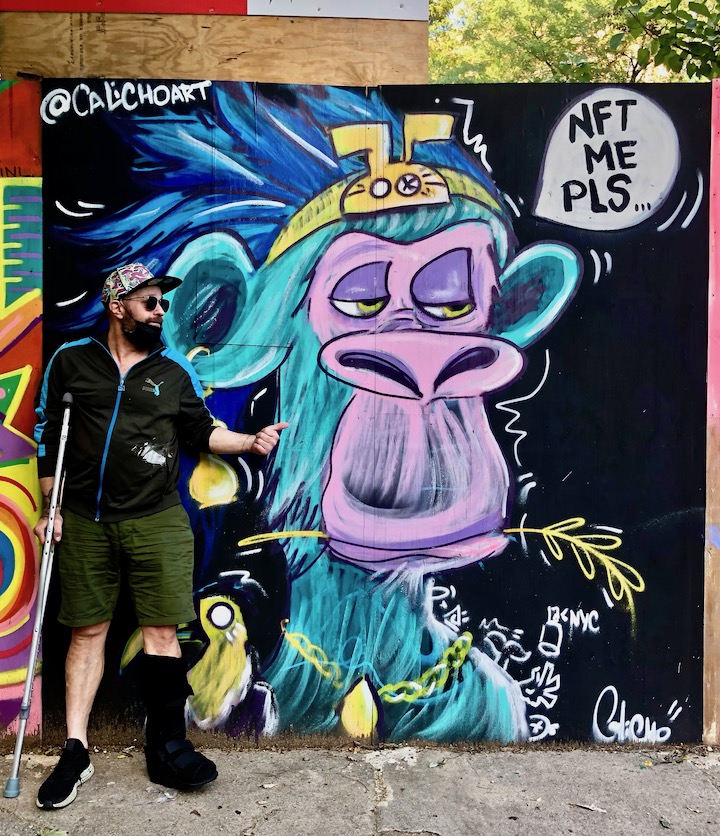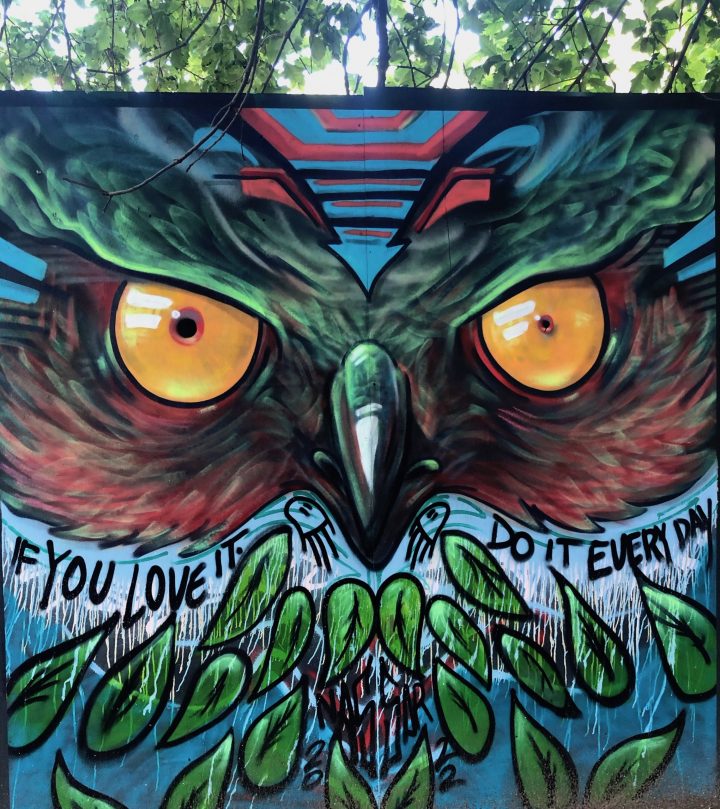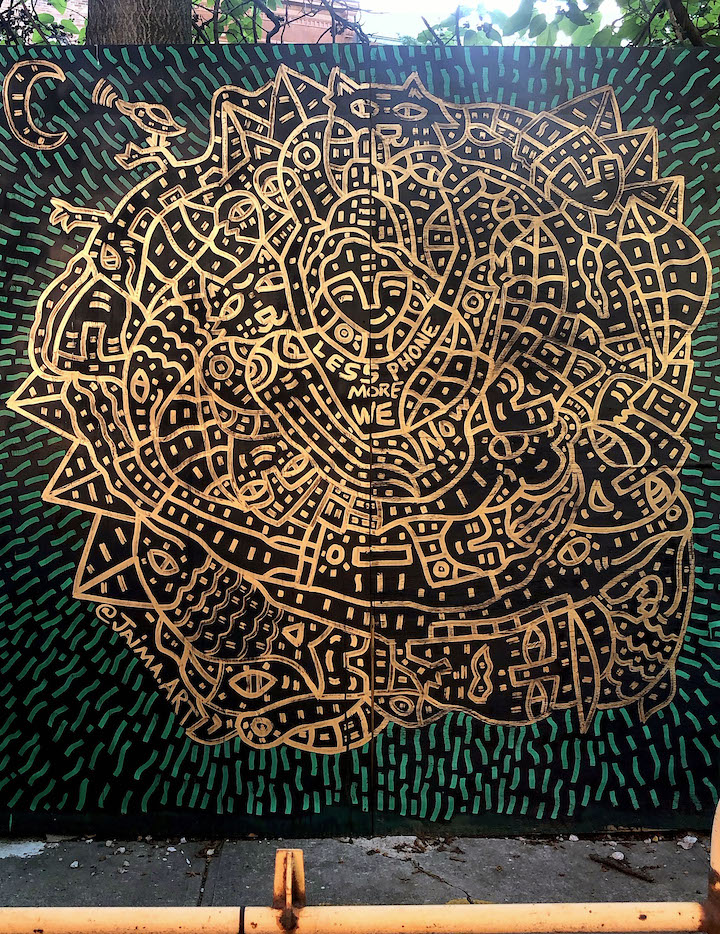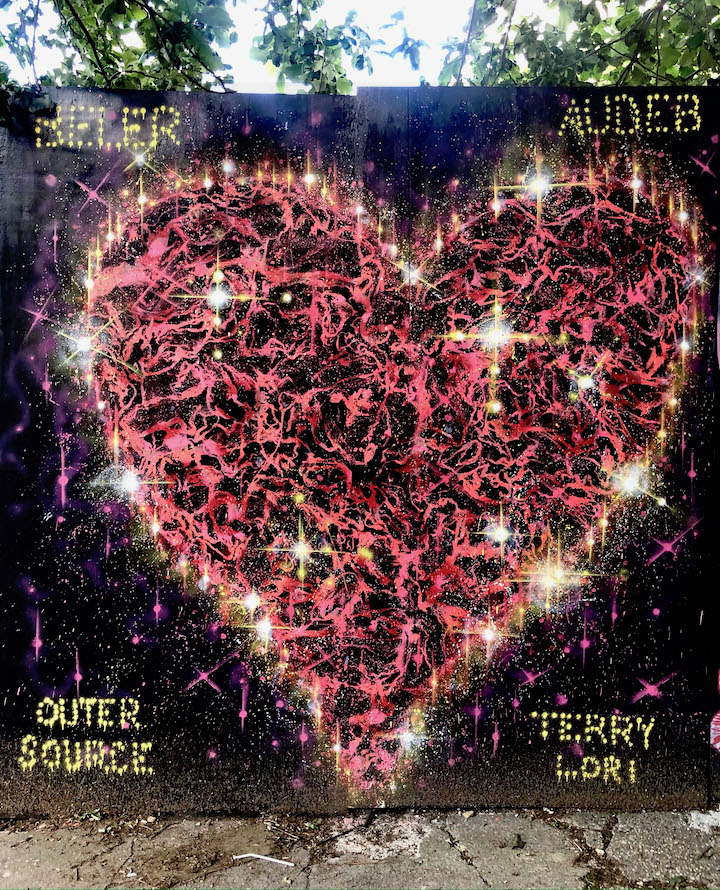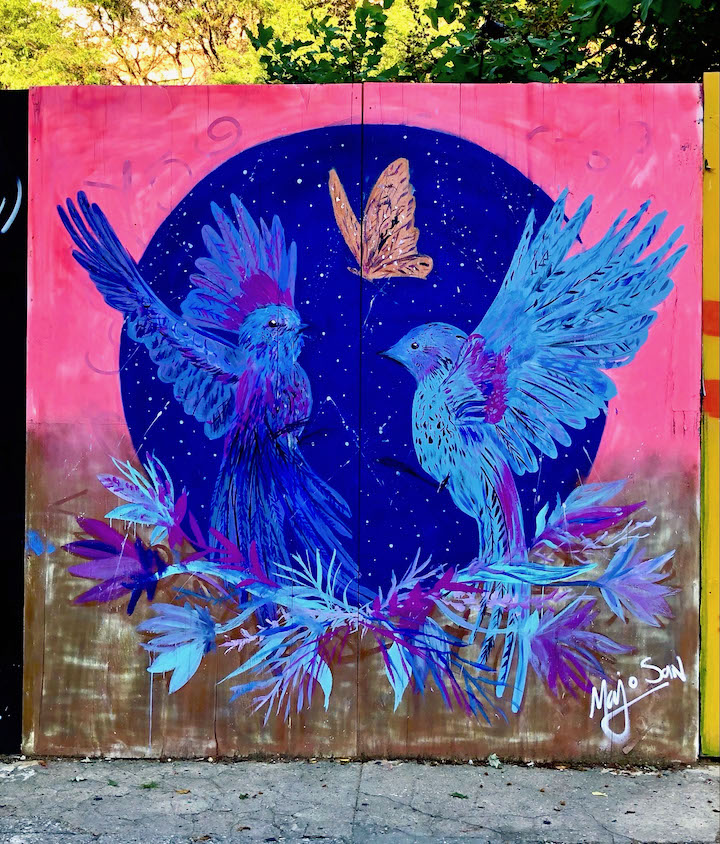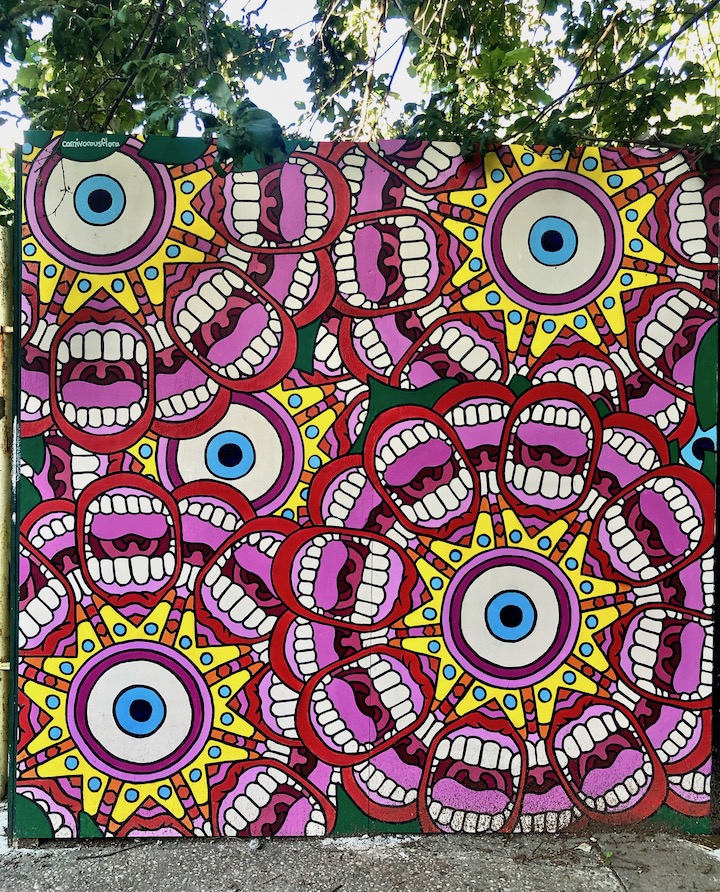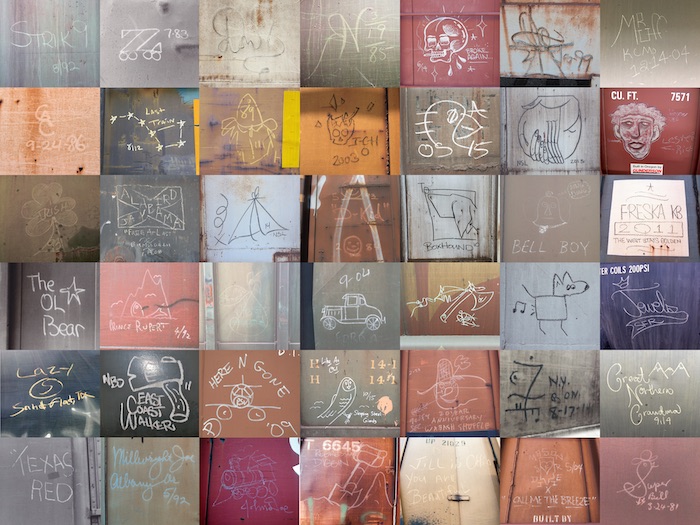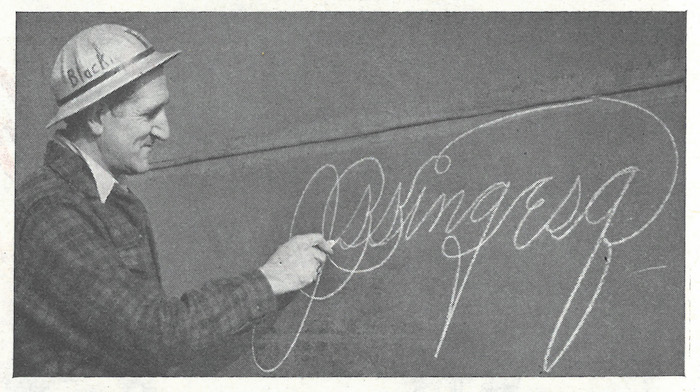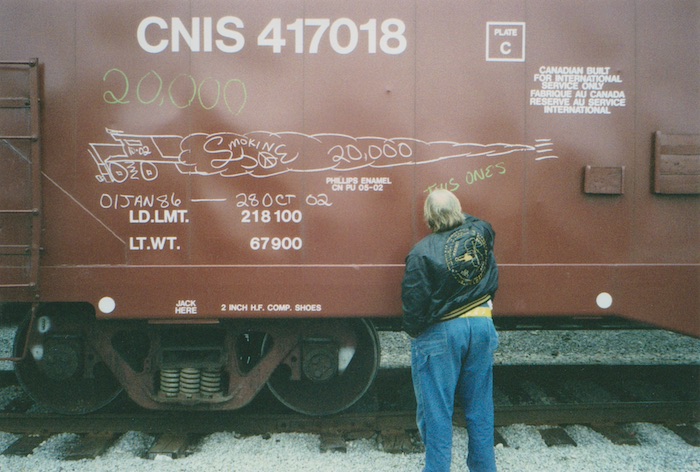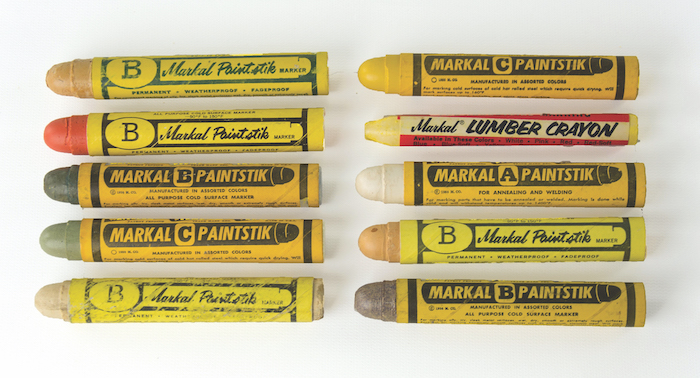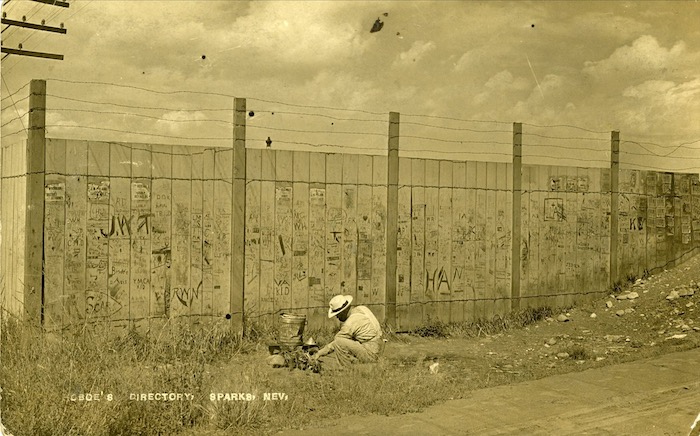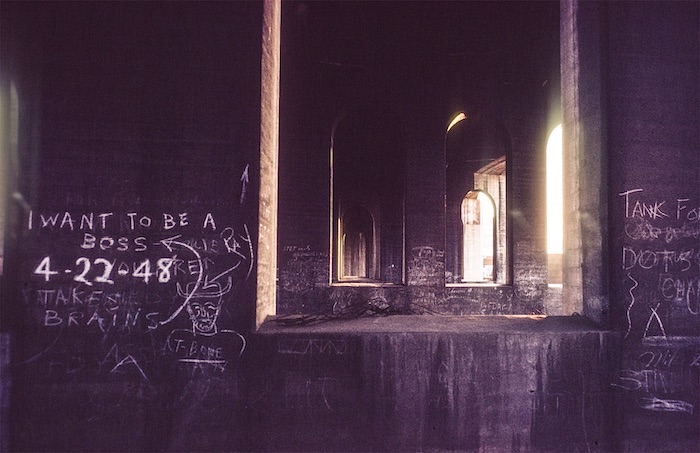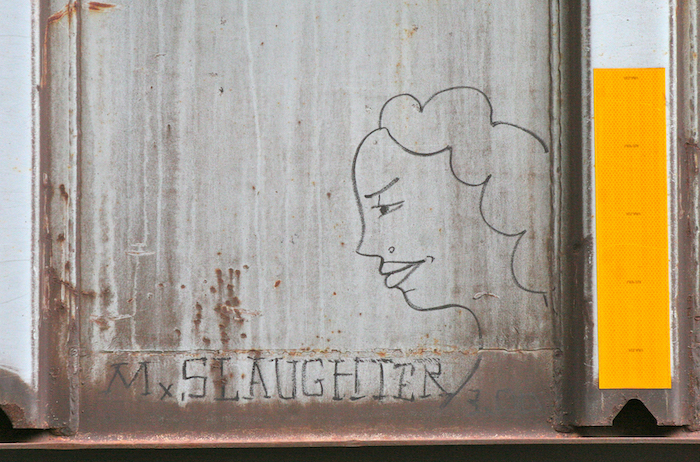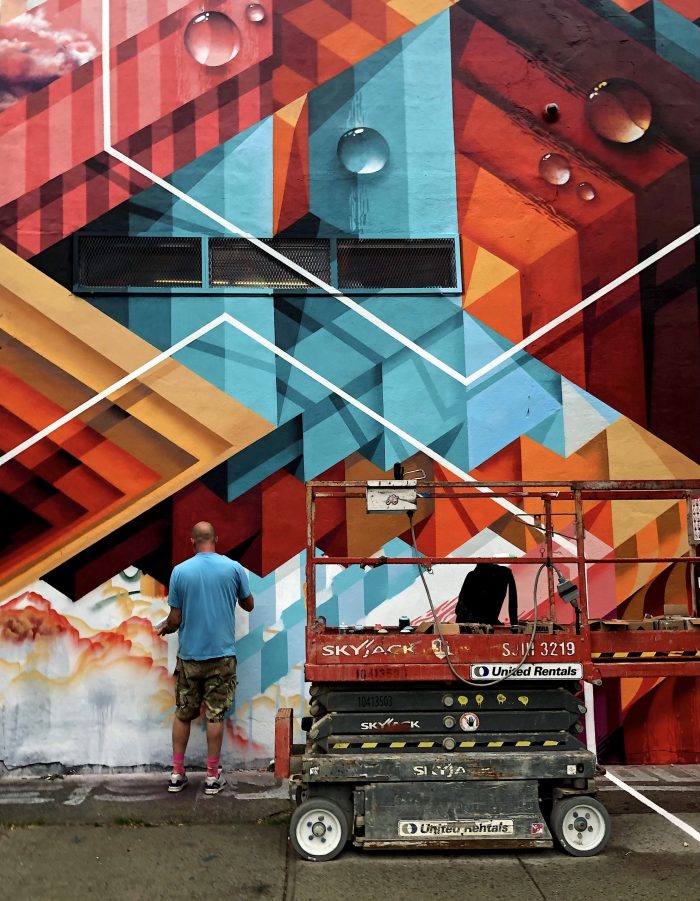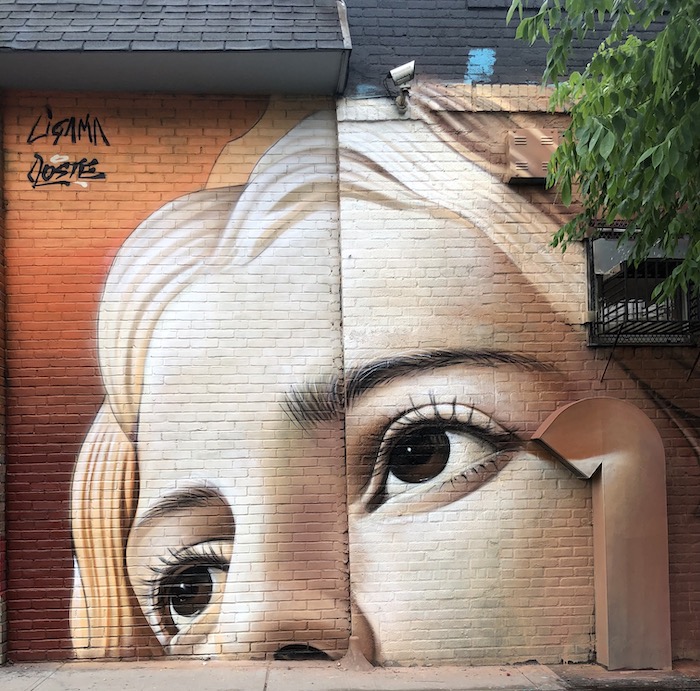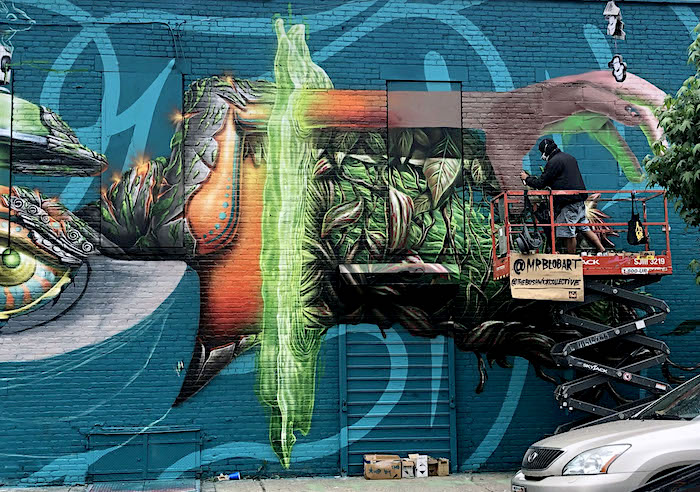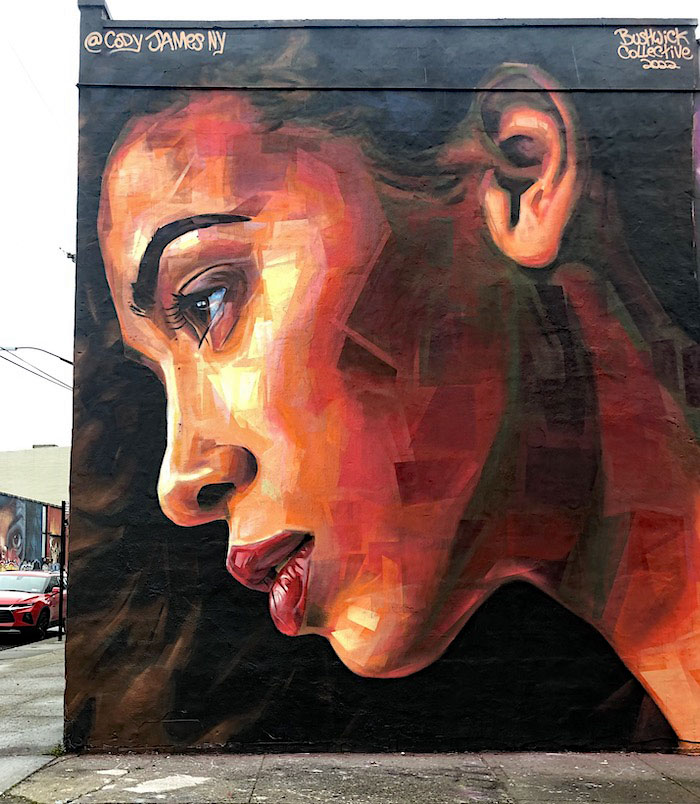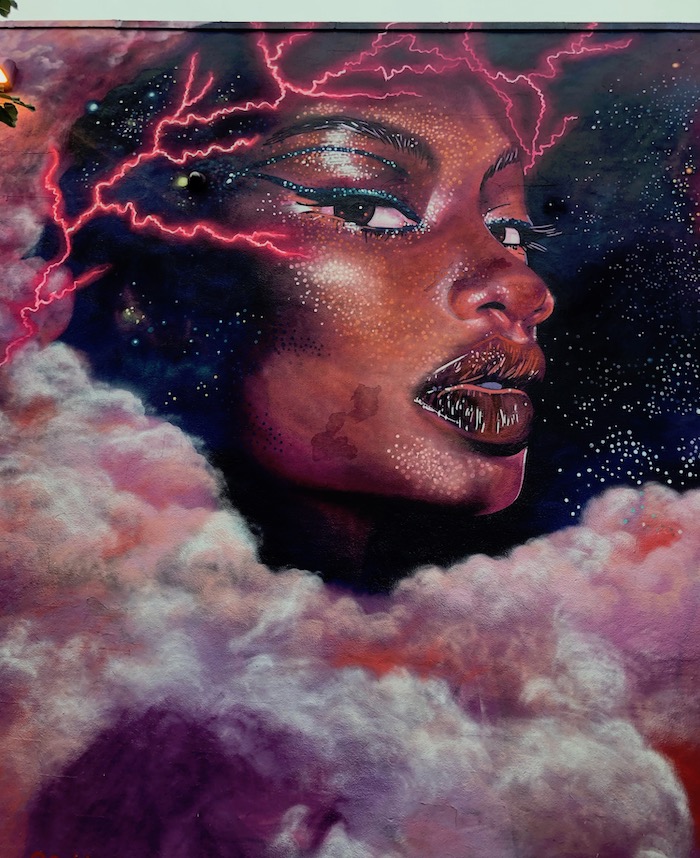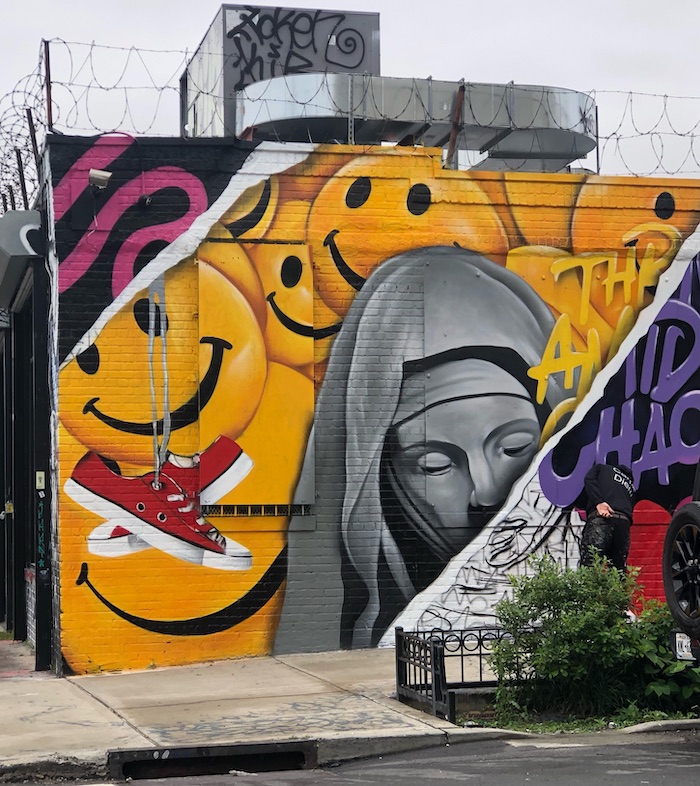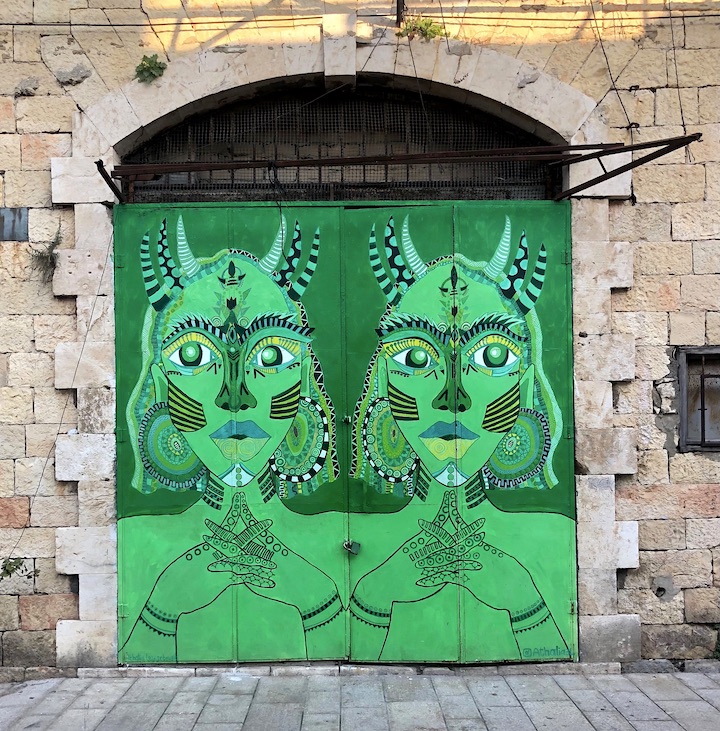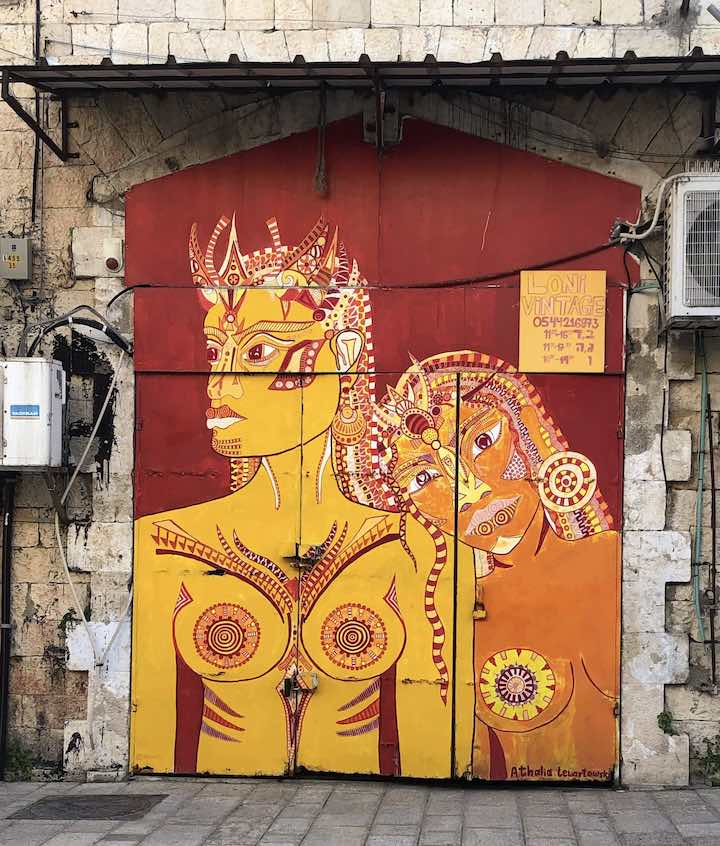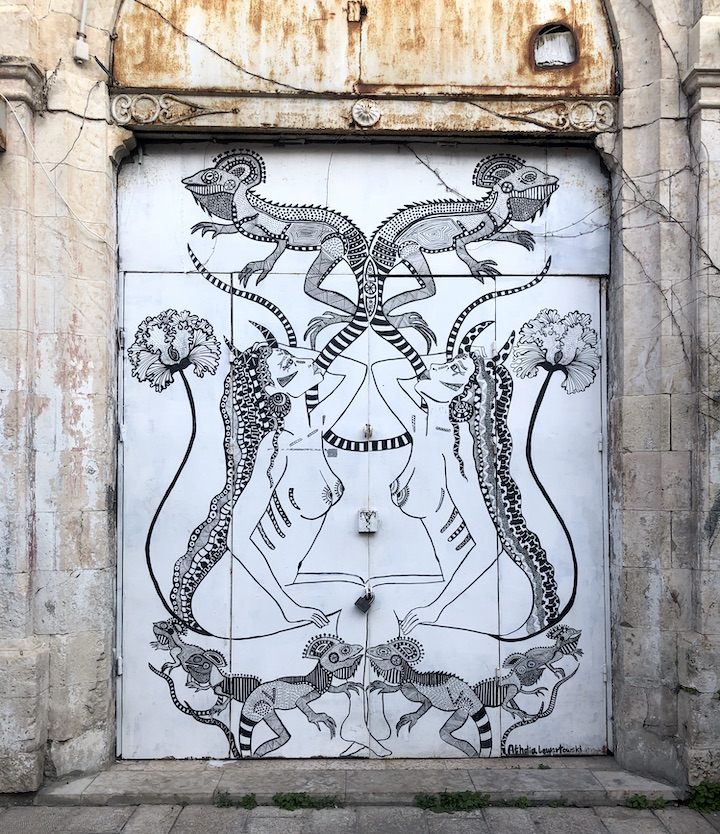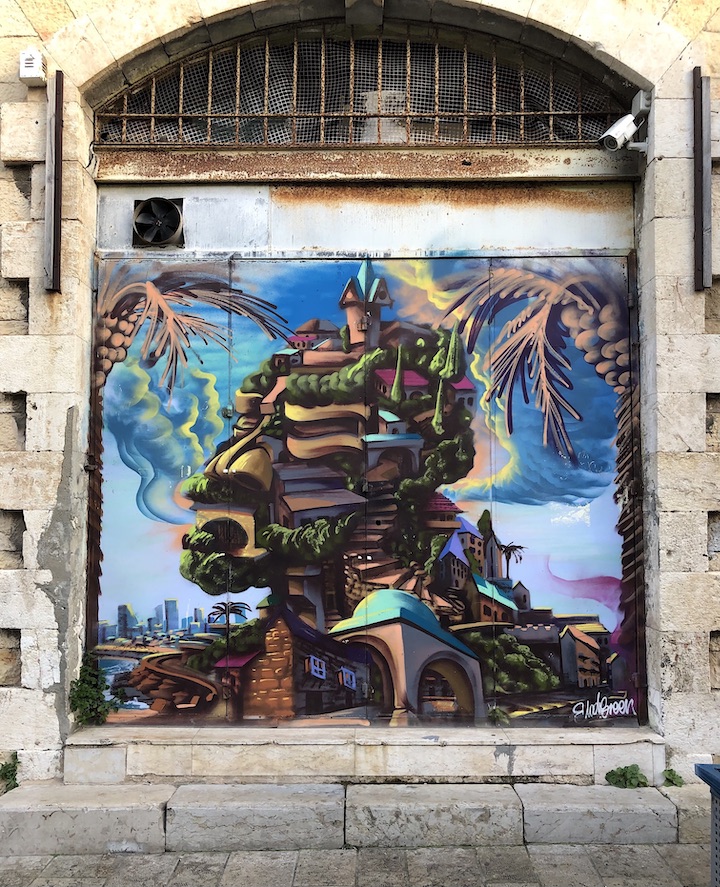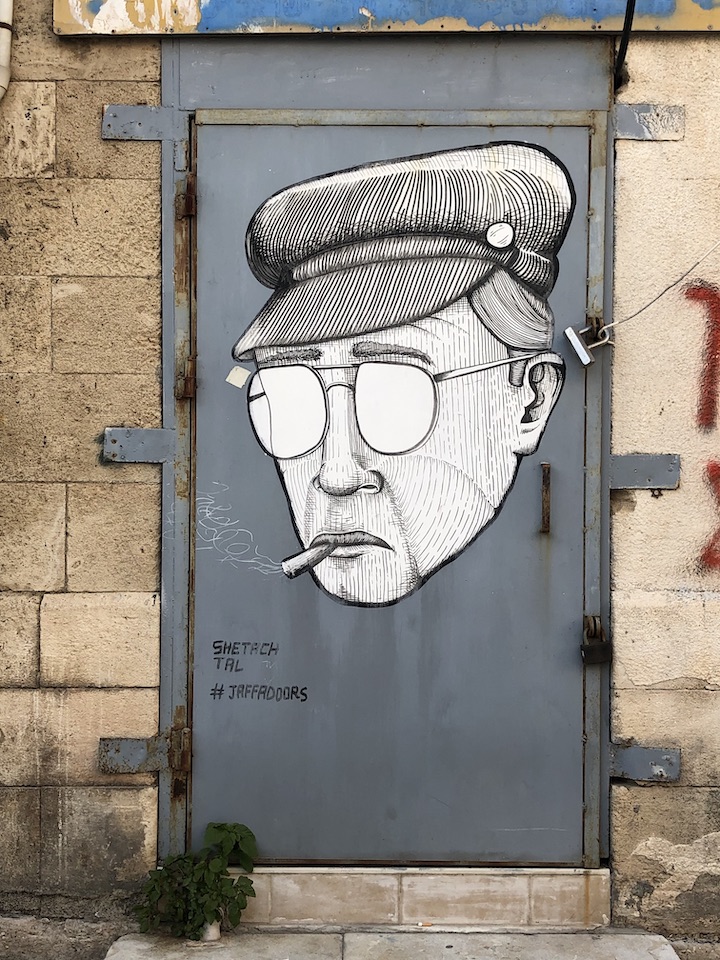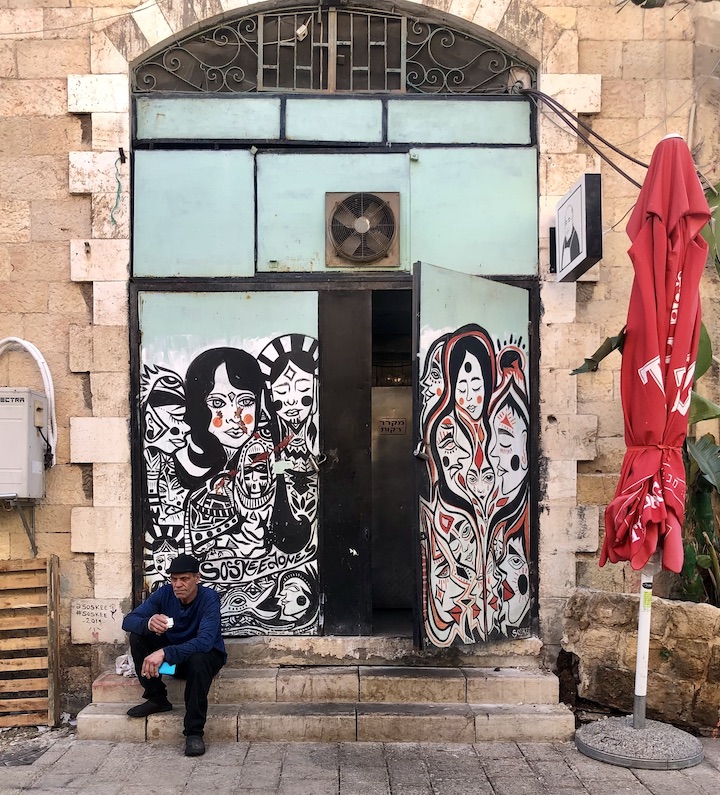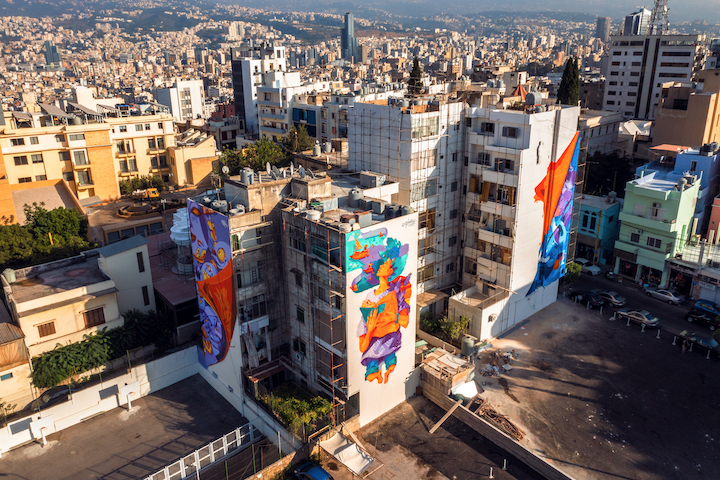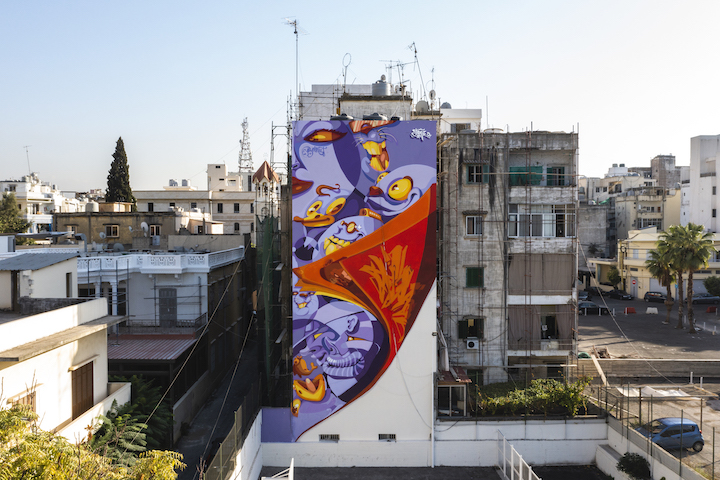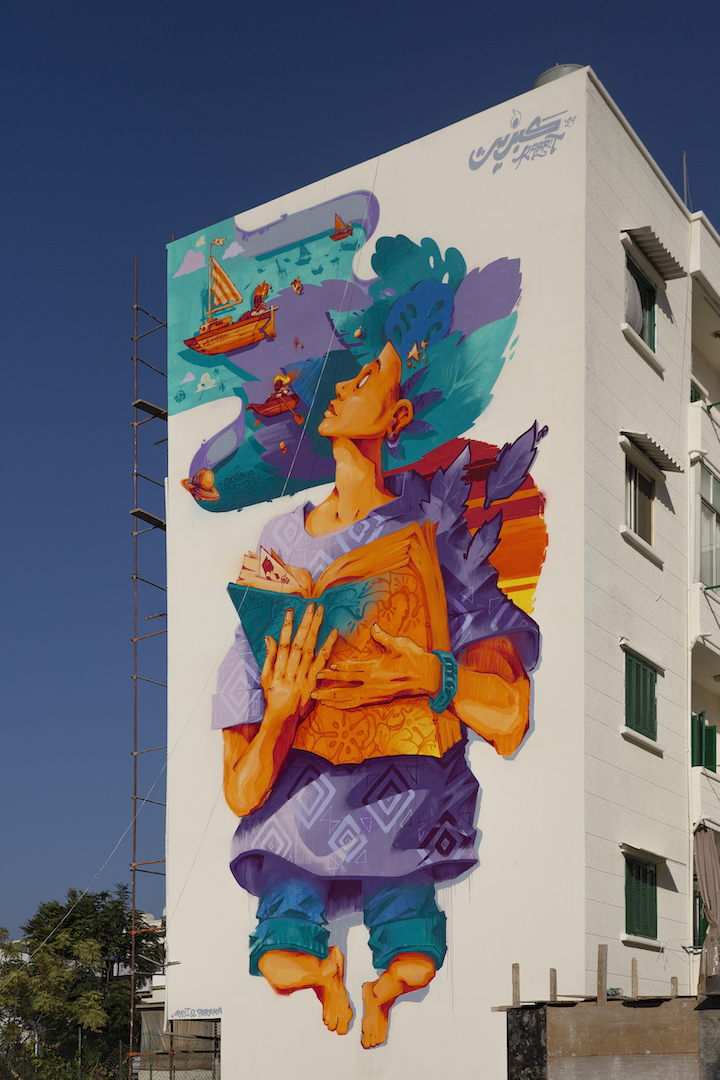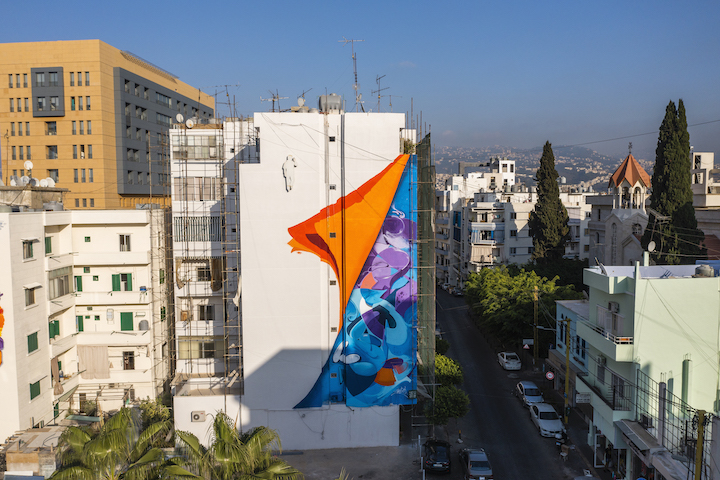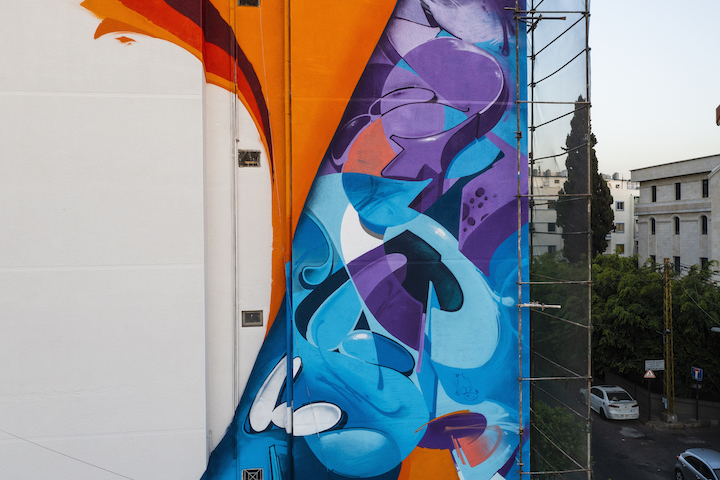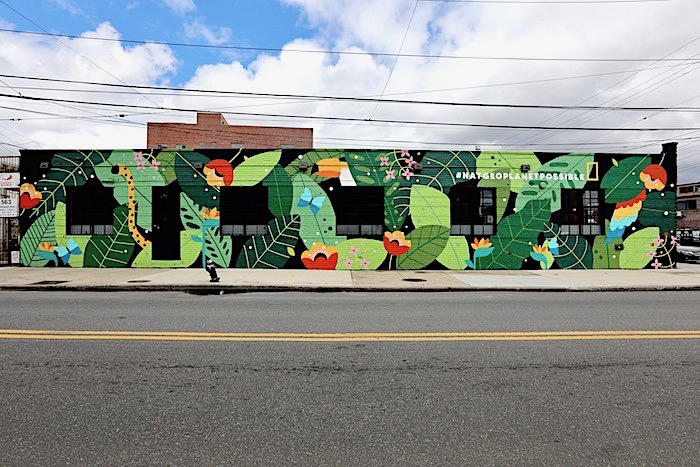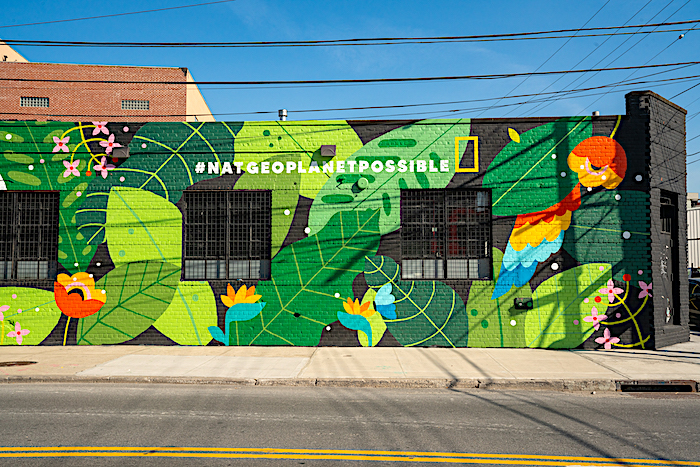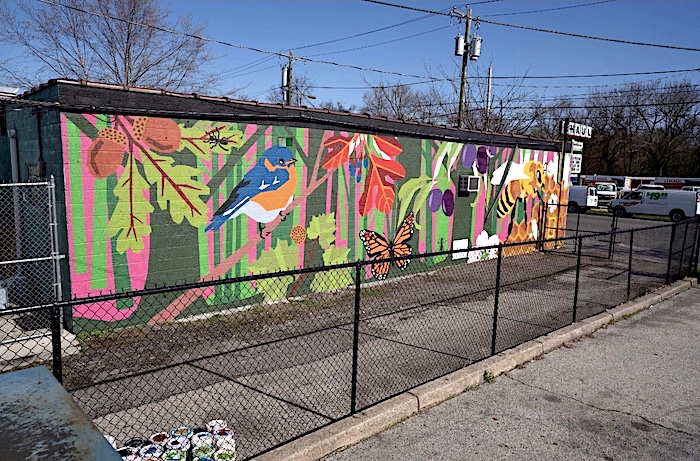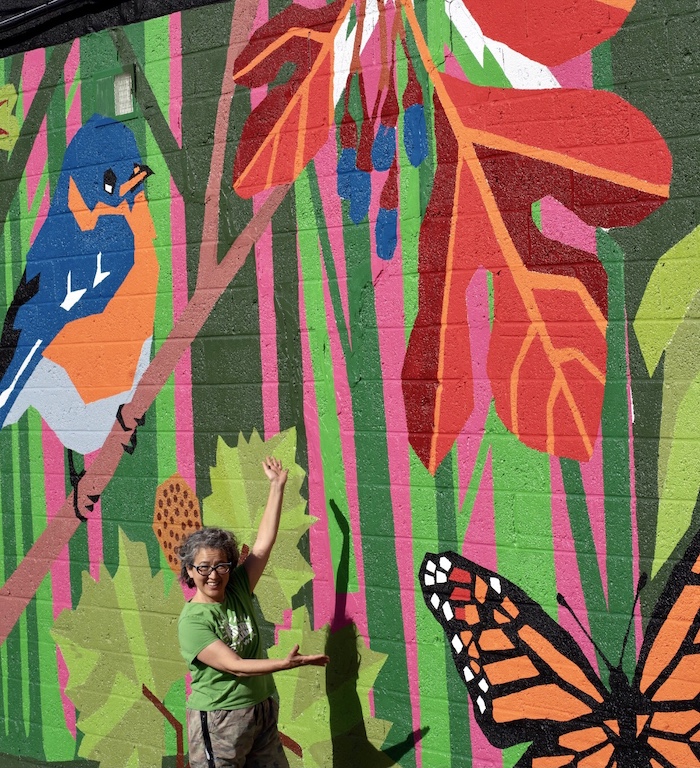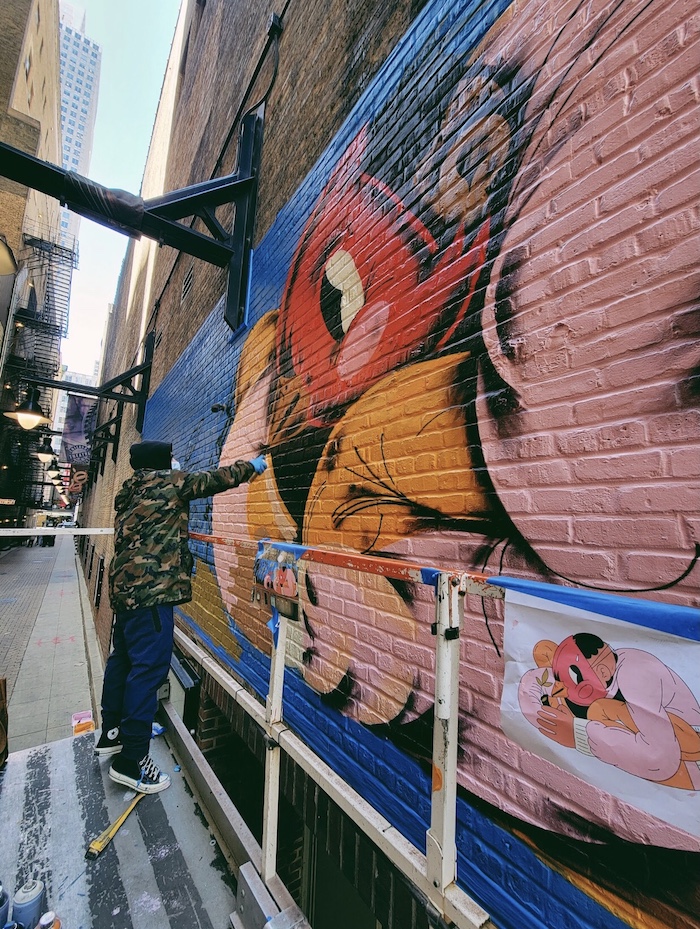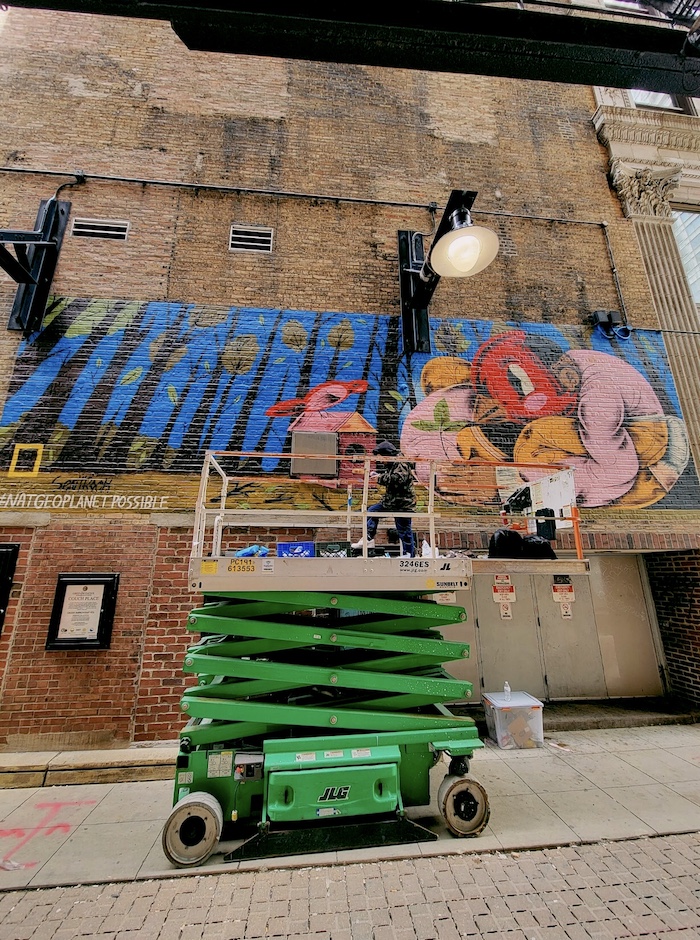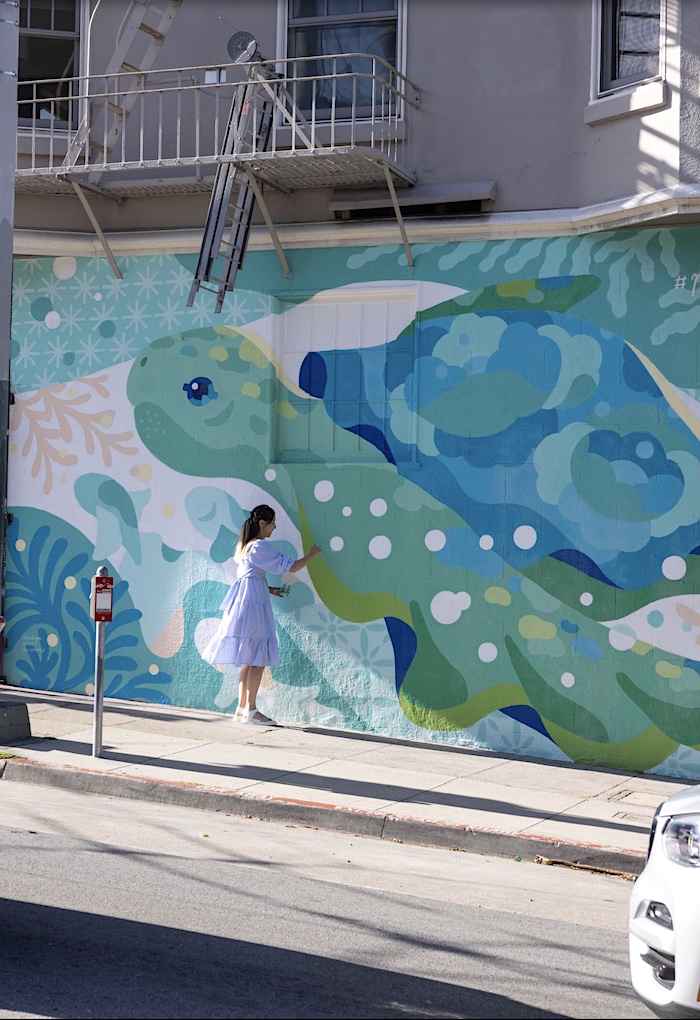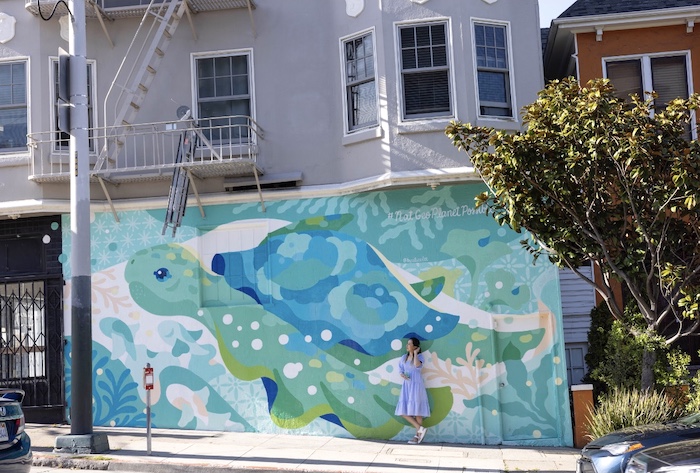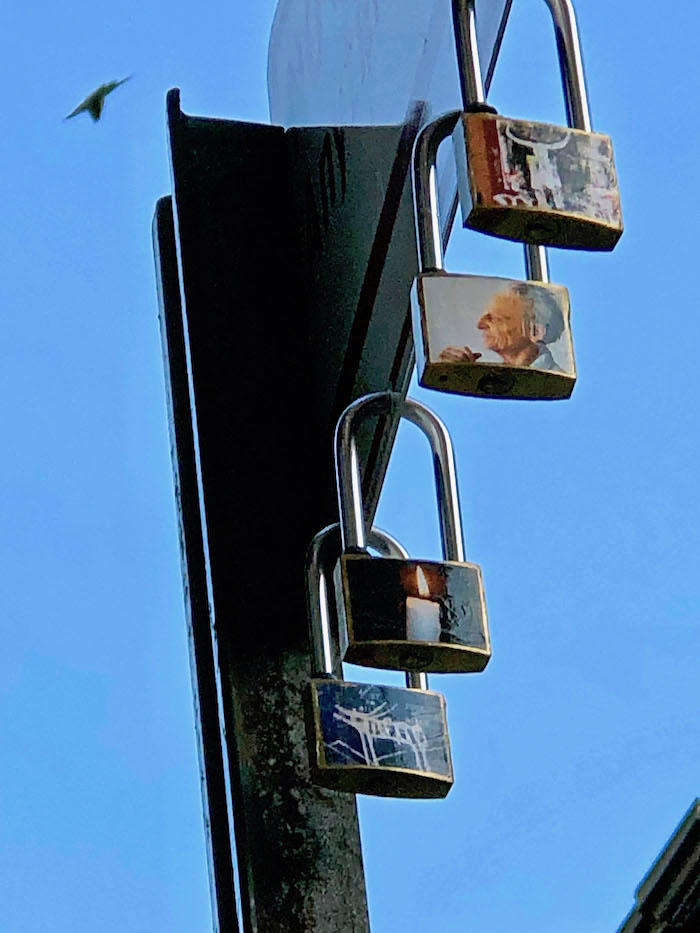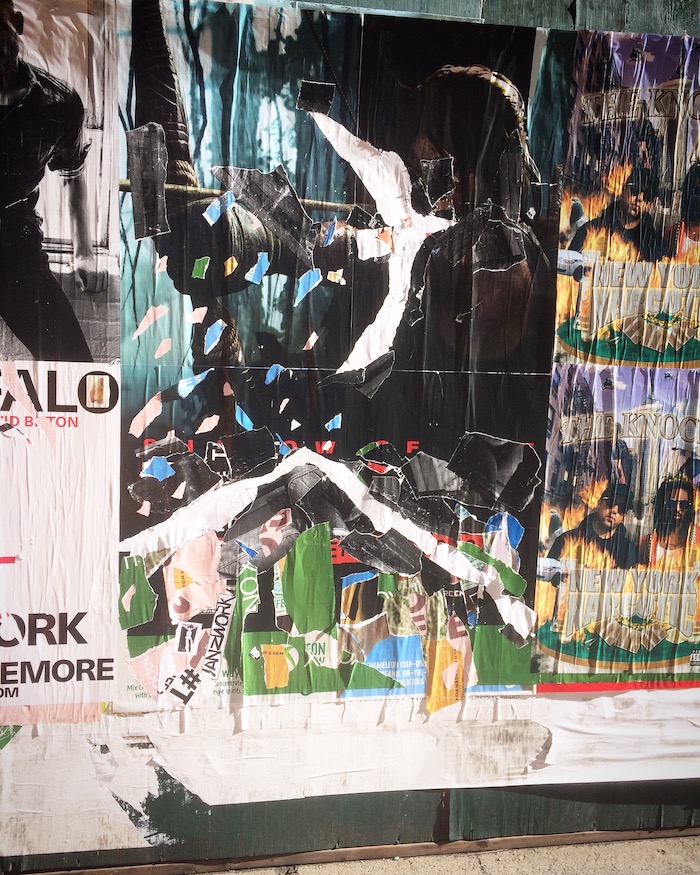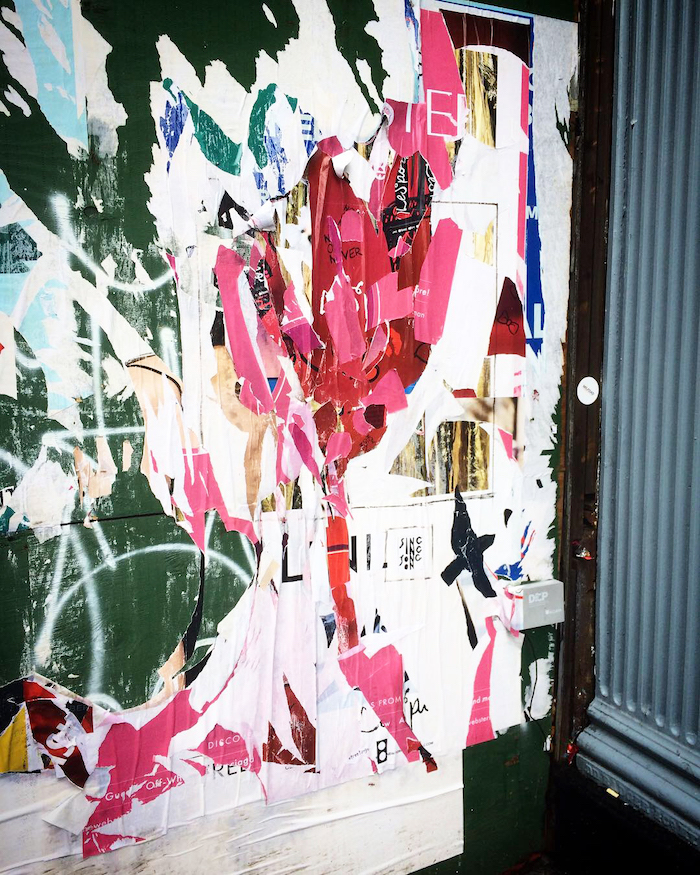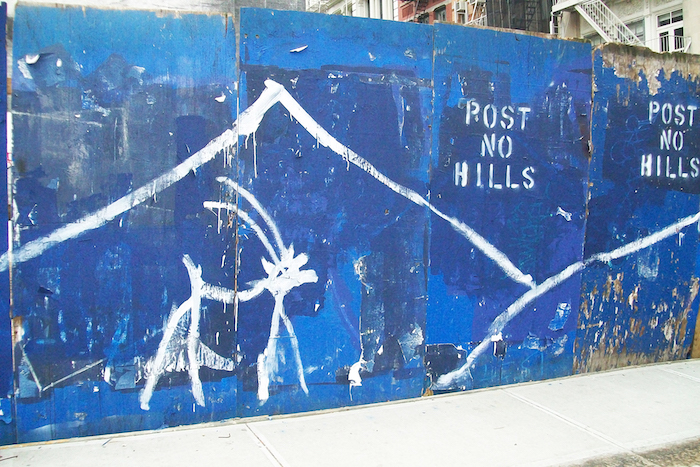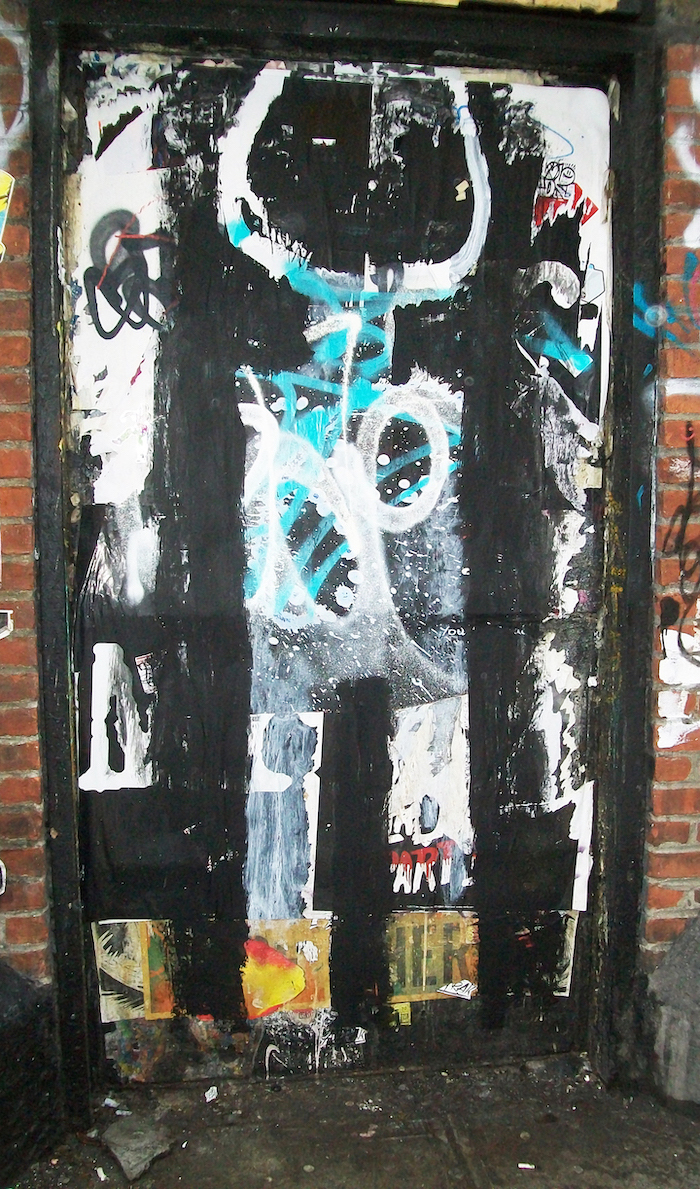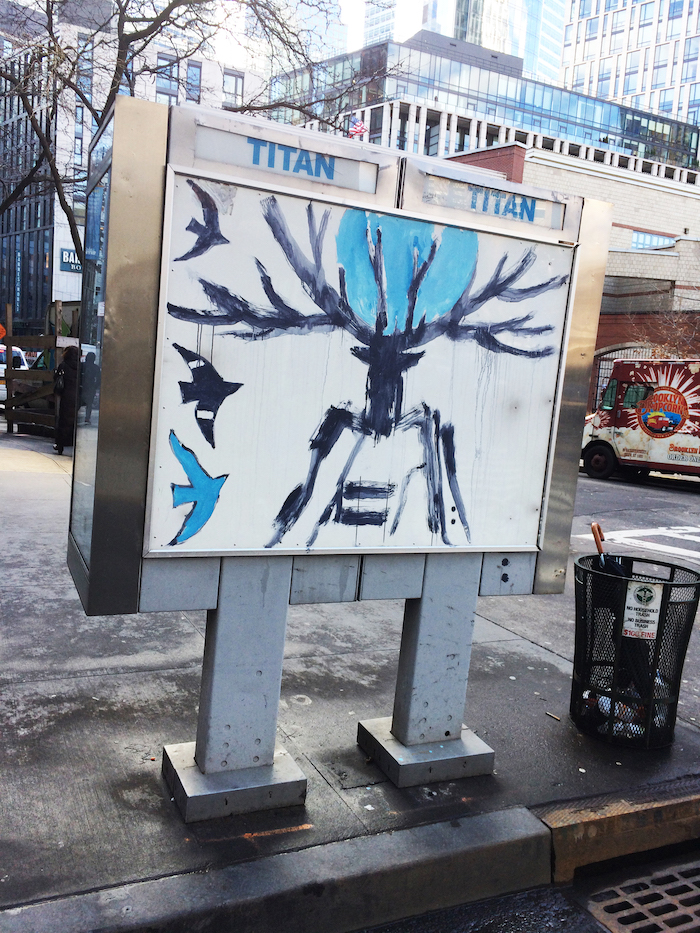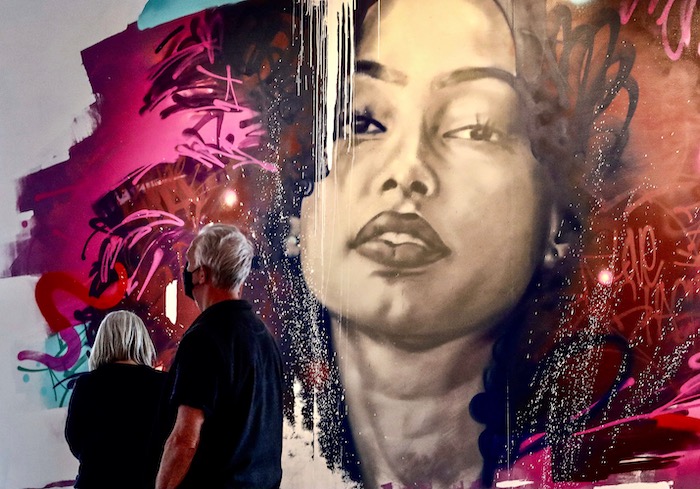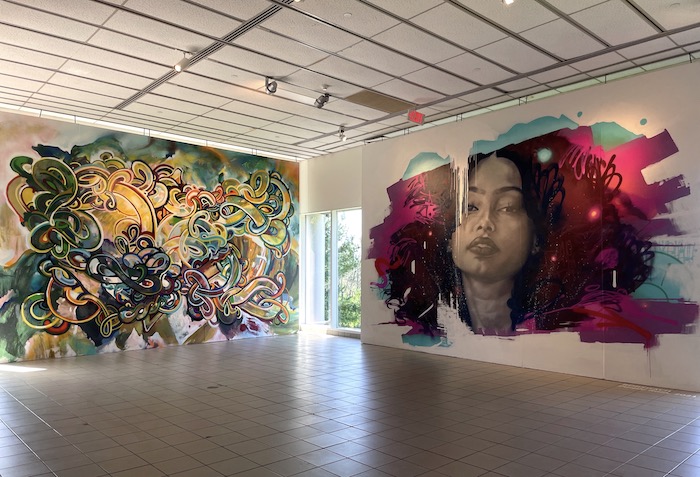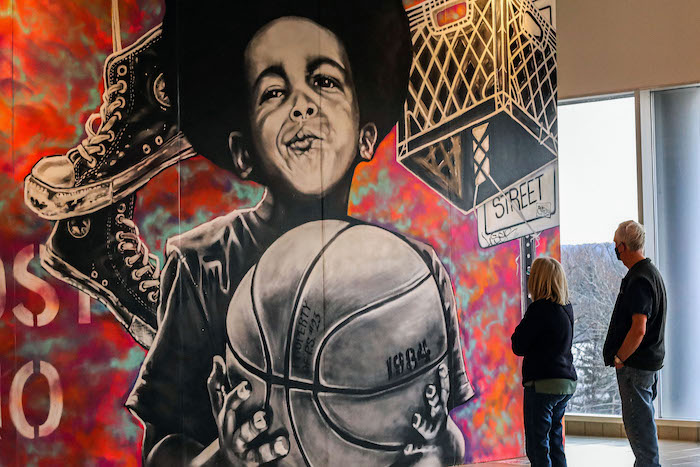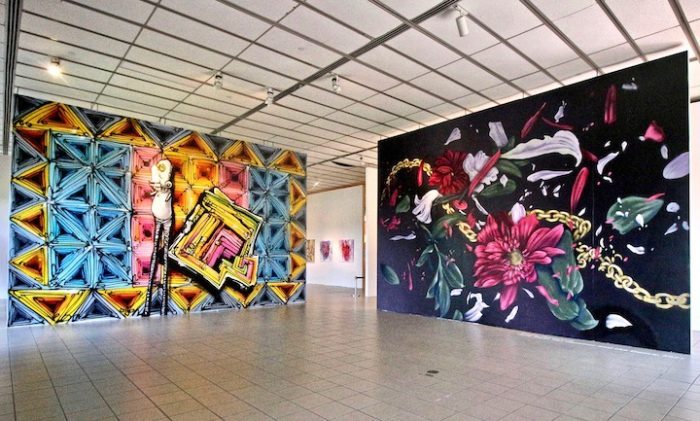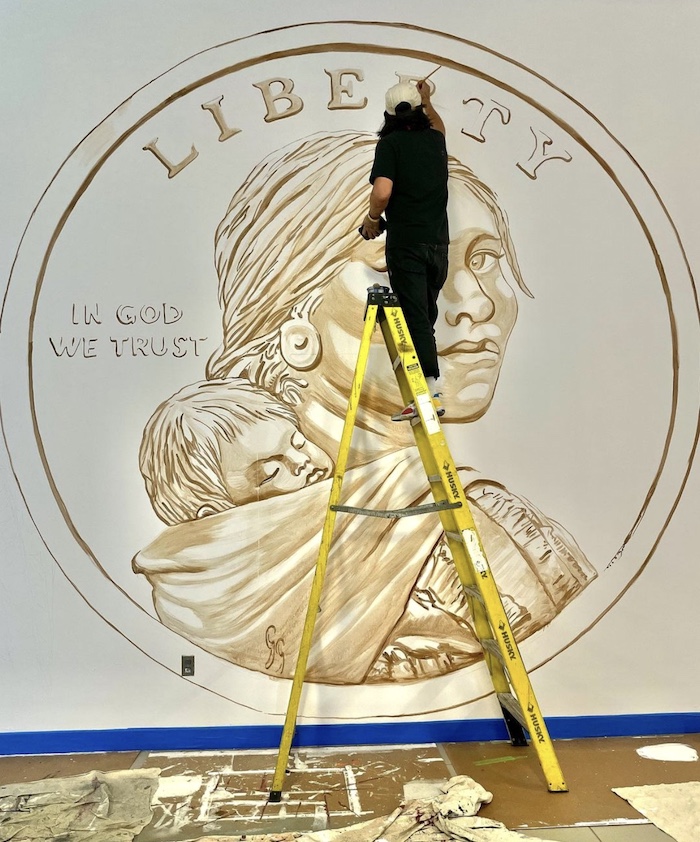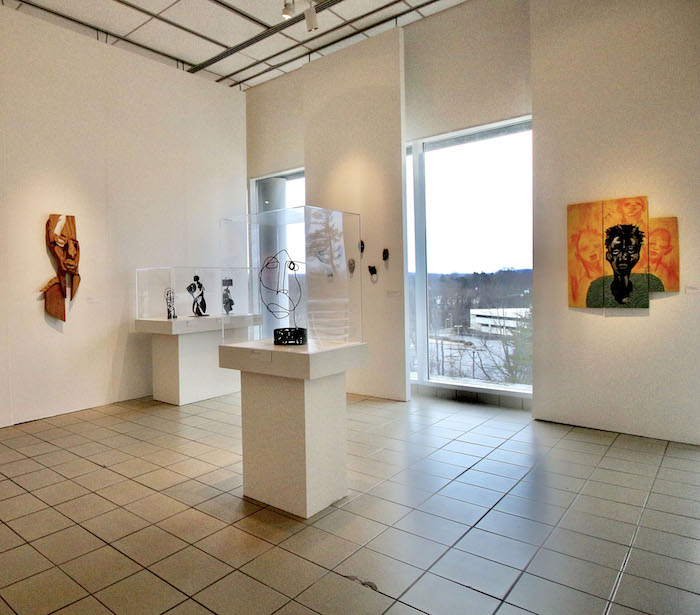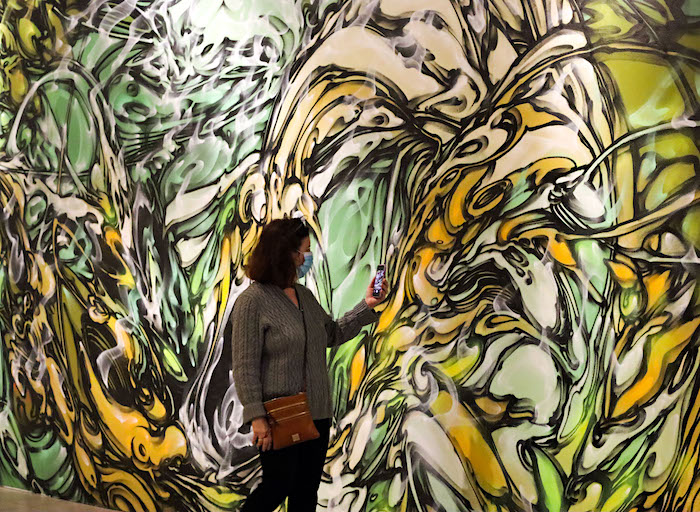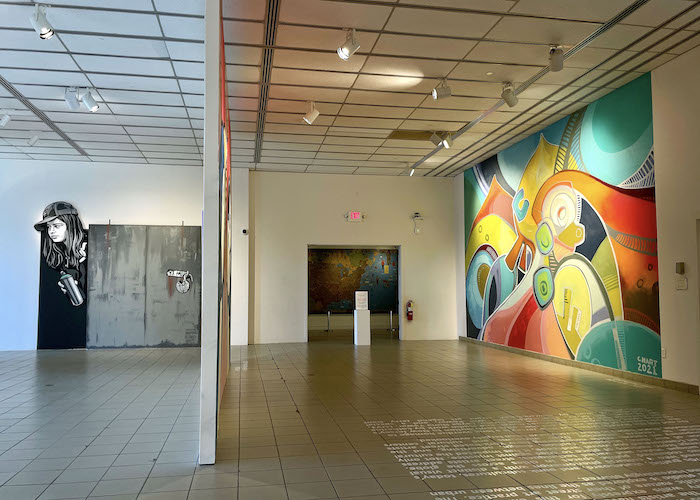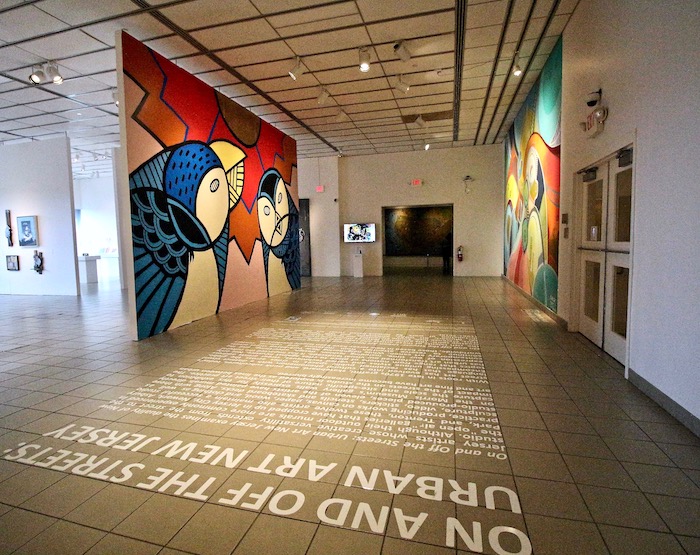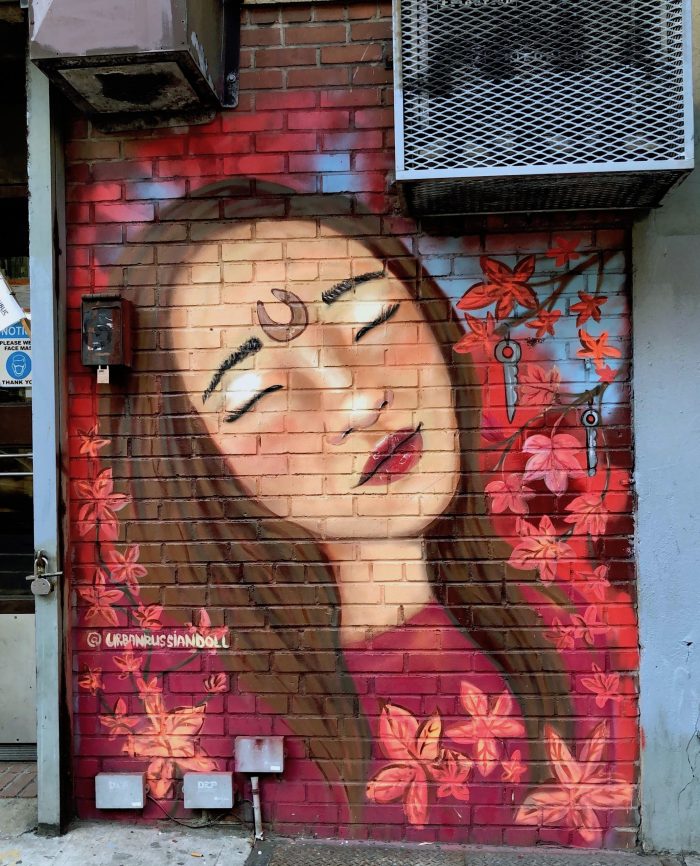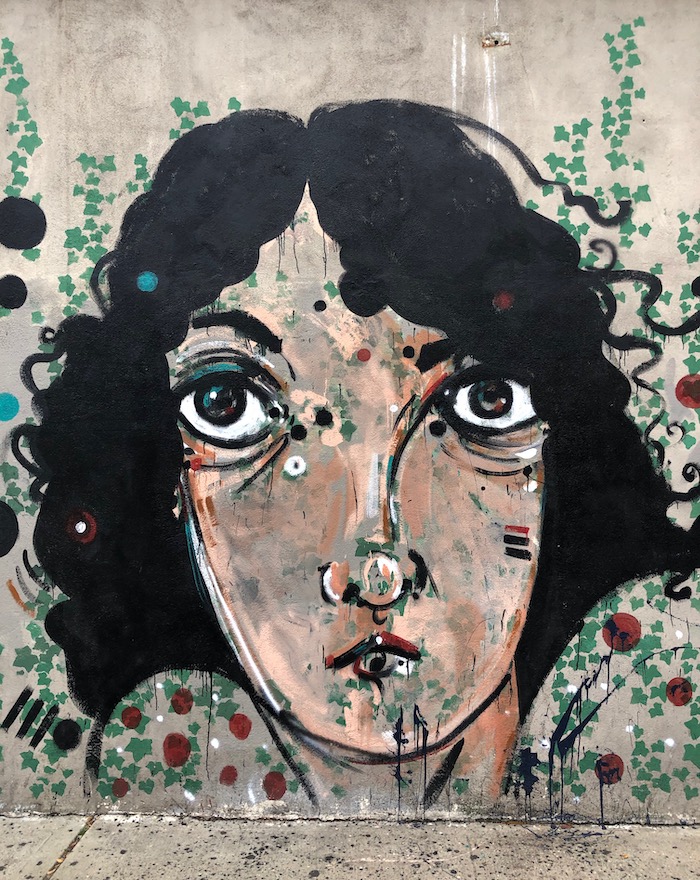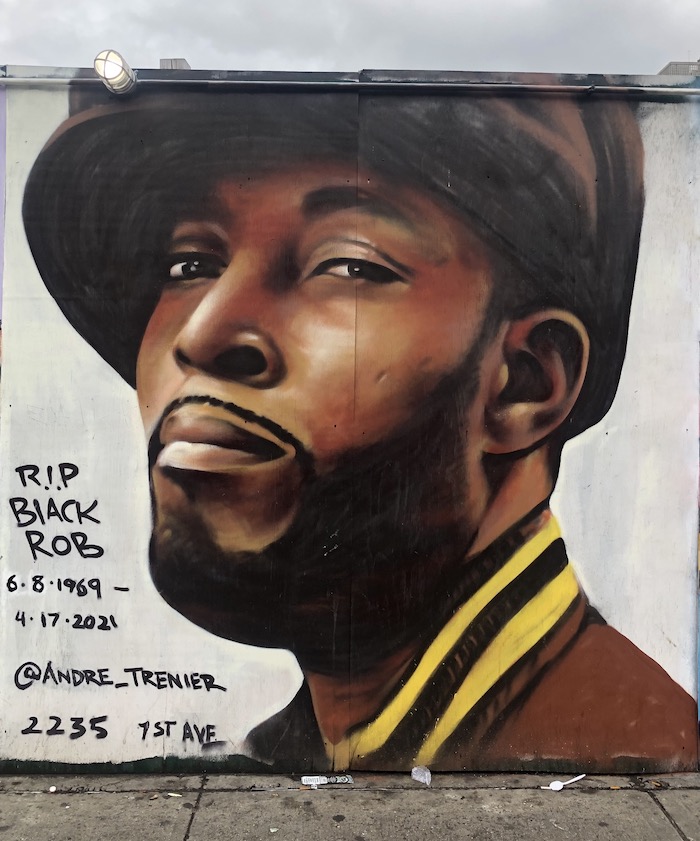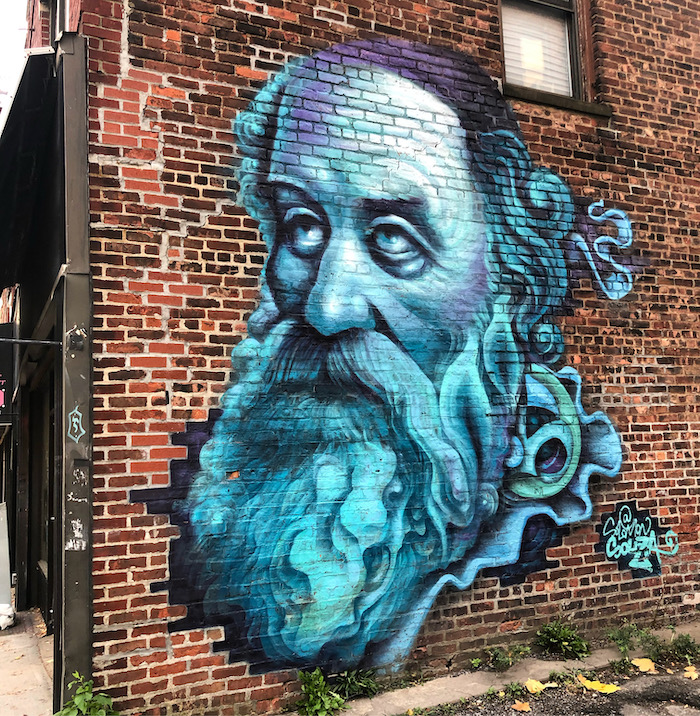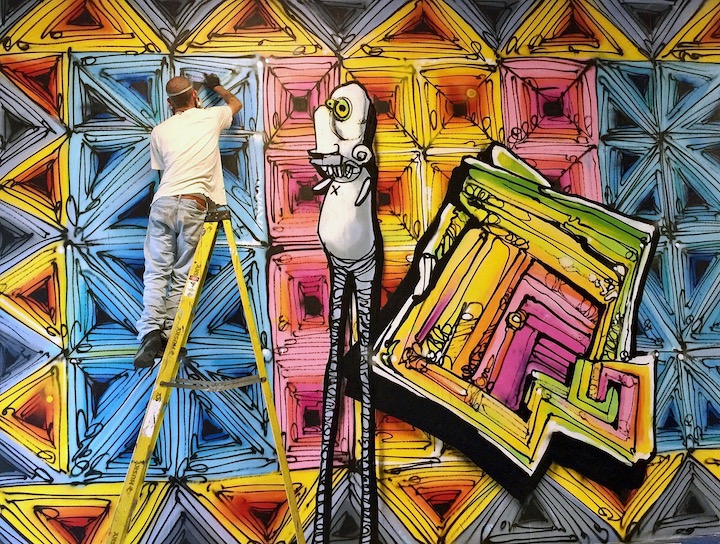
Clarence Rich has been enriching the streets of Jersey City for over a decade. His impressive multi-faceted body of both street art and studio art ranges from curious characters to poignant portraits of family members to harmonious rhythmic pattern. I was delighted to feature his infectious aesthetic in the exhibition On and Off the Streets: Urban Art New Jersey that continues through this month at the Morris Museum in Morristown, New Jersey. An interview with the artist follows:
When and where did you first get up?
When I was 13 or 14. In 1997, I had my first real tag.
Had you any preferred surface back then?
Anything and everything around me.
Did anyone or anything in particular inspire you at the time?
Growing up in the 80’s and 90’s in Jersey City, I saw graffiti everywhere. Along with skateboarding and playing basketball, kids were always writing their names, tagging… It’s almost as though everybody’s older brother did graffiti – including mine. He’s two years older than I am, and he has been my partner since the beginning. I wrote LOSER as my tag. and he wrote DZEL, and together we started the AIDS (And It Don’t Stop; Alone In Deep Space) crew. And there were a few main people getting up in the neighborhood who were amazing. Among them was T.DEE. He was the founder of Undercover, the first graffiti magazine.
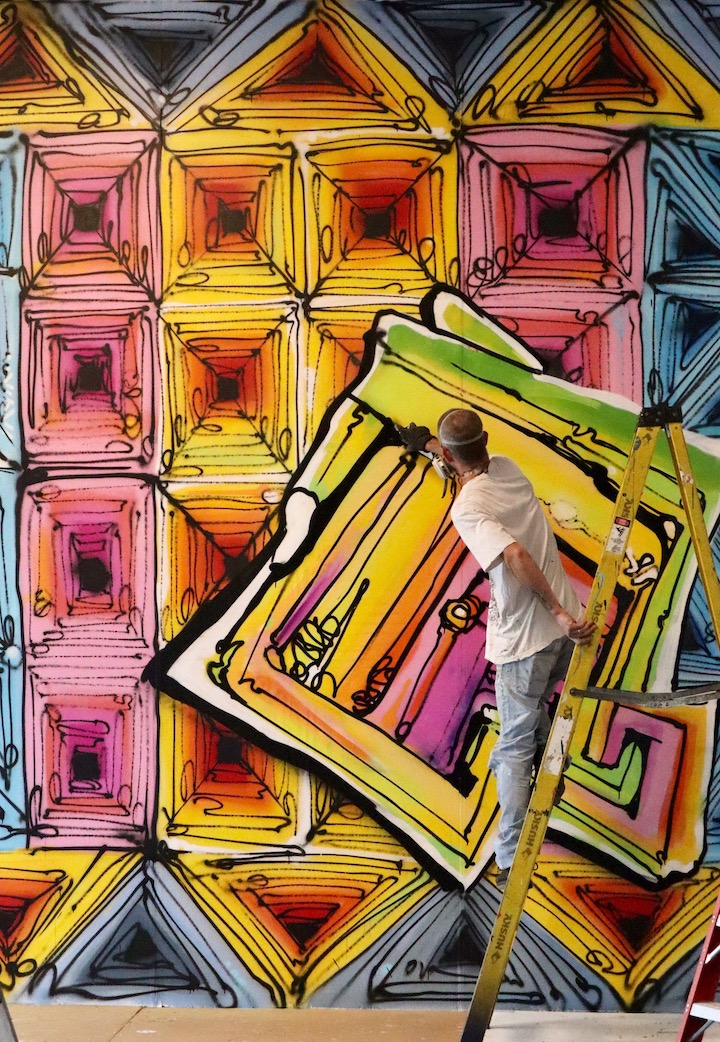
What about the name Loser? How did you come up with it?
We used to hang out in the parks and sit on the stoops. And one of our neighbors walked by and saw the graffiti and said, “What kinds of losers do this shit?”
Do any early graffiti-related memories come to mind?
There were just so many amazing things that changed my life. Meeting so many great artists who inspired me. That was a blessing. But here’s a story: We’re also rappers. Our original rap group was called AIDS — Adolescents In Dire Straits; Alone In Deep Space…We started tagging it on walls, but we never thought it would go anywhere. And so once we started our crew, then we had to switch our rap name to the “Animal Crackas.”
Do you prefer working alone or collaborating with others?
I’d rather collaborate because my crew is so amazing. It’s now 20 years old.
Is there anyone, in particular, with whom you’d like to collaborate?
Rembrandt.
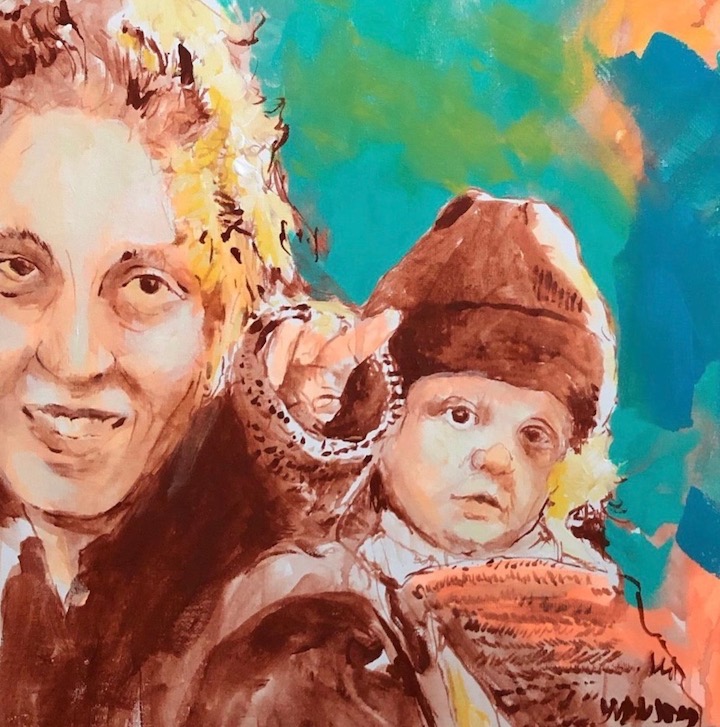
Have you any thoughts about the street art/graffiti divide?
I’m right in the middle. We’re bridging it. We’re not just graffiti writers. We are evolving. Many of us are transitioning from graffiti to street art to fine art. And we do all three. Some of the most amazing writers are also fine artists.
How do you feel about the movement of graffiti and street art into galleries and museums?
I’m so happy! I’ve put together amazing shows in galleries for these past ten years. But to hang in a museum? Even that word! It’s huge for an artist.
What about the corporate world? How do you feel about street artists and writers collaborating with corporations?
Let’s get their money. I got this two-year old. I have to make money, and I don’t want to always have a day job working with fire alarms. I want to be an artist who paints whatever it is I want to paint whenever I want to paint it.
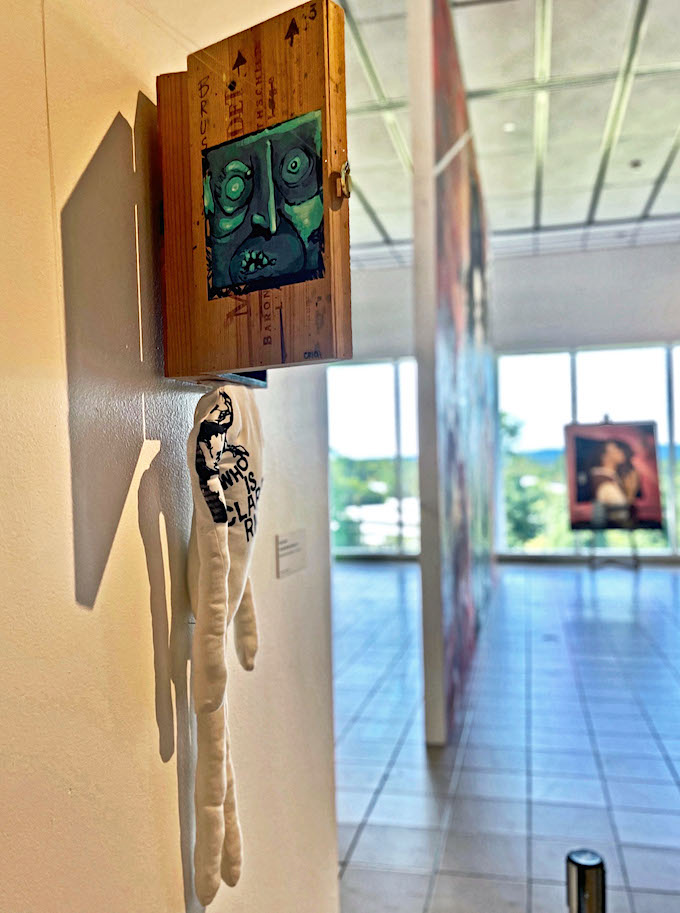
How do you feel about the role of social media in this scene?
I’m just trying to ride the wave. If you’re not on it, you’re missing a big audience.
Have you a formal art education?
Yes. My mom encouraged me to get one. I studied Fine and Commercial Arts at DuCret School of the Arts in Plainfield, NJ. It was the best thing I ever did in my life. It helped me find out who I was. But it’s also in my blood. My grandparents worked as animators for Terry Tunes, and my grandfather was one of the animators for Beavis and Butthead.
How would you describe your ideal working environment?
I’d paint anywhere. I just need time to paint! Now that I’m a dad, I get up most mornings at 4 – just so that I could have time to paint.
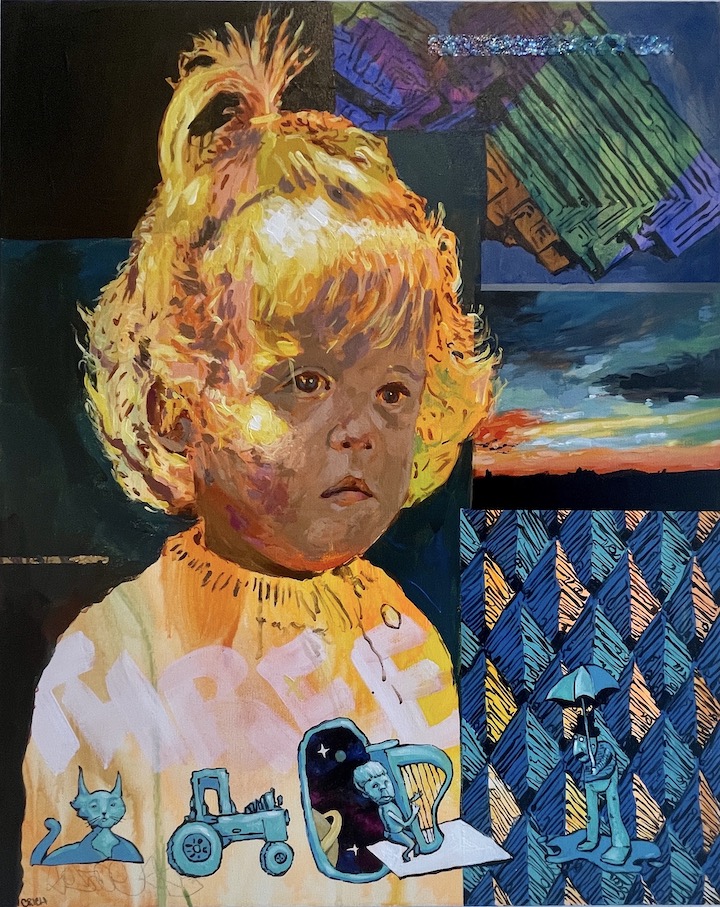
What inspires you these days?
For now, my son inspires me. Becoming a father was the ultimate change in life. I want to be a good man, and provide for him and his mom.
Are there any particular cultures that have influenced your aesthetic?
Hip-hop, 100%.
Is there a central theme that ties your work together?
I’d have to say “family.” I’ve always been inspired by my mom and the women in my life, and just painting a woman is a beautiful connection to women. I can paint any female face and it becomes familial to me.
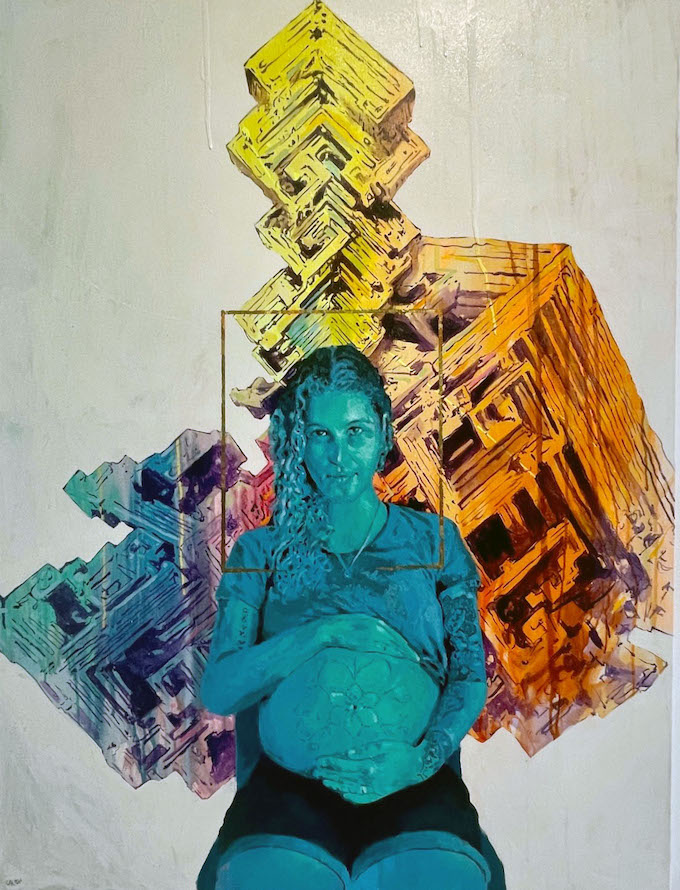
Do you work with a sketch-in-hand or just let it flow?
When I work on walls, I let it flow. I just freestyle.
Are you generally satisfied with your finished piece? And how do you know when it’s finished?
Never. I’m never satisfied with anything!
How important are others’ reactions to you?
It always feels good when you hear people say that they like your work.
How has your work evolved through the years?
It’s moving in the direction of fine art.
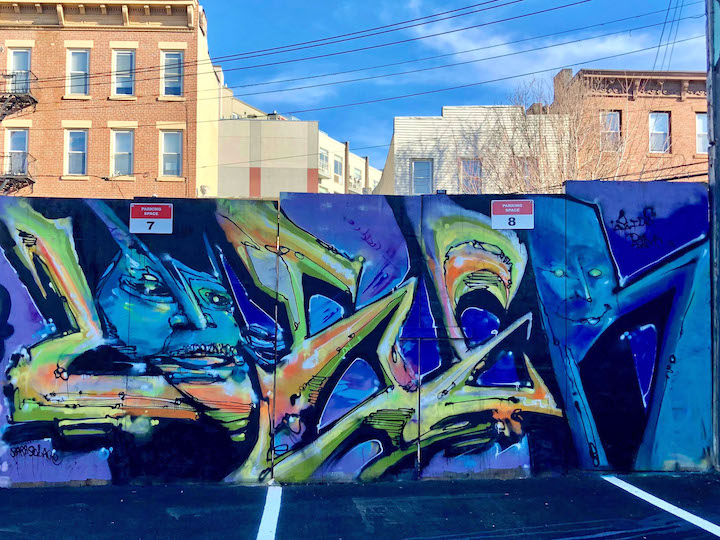
Have you any preferred colors?
Blue. Why? Picasso. And there’s more. I take pride in myself that I don’t use fancy paints. I don’t put tips on my cans. I just go to Home Depot or the hardware store and I buy the colors they have. And the color blue has so many variations.
What media do you currently most enjoy working with?
Most of my work is mixed media.
How has the work you’ve done on the streets impacted your studio work?
They’ve influenced each other. They’ve both evolved. Sometimes I feel more comfortable painting with a brush. But I want to do both. I want to make money from fine art and still paint on the streets.
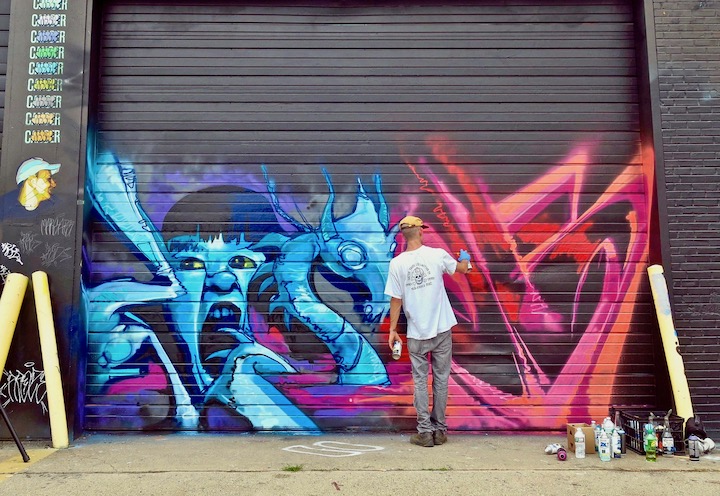
How has your artwork evolved in the past several years? And how does your studio work differ from your street art?
I keep pushing it as an artist. My body of work is constantly evolving. When I work in my studio, I do it in smaller increments in multiple sessions. When I do a piece on the street, it usually takes me a day. And I haven’t yet broken into doing large-scale portraits in my studio with spray paint. I’ve done a few, and I’d like to do more. And sometimes things just happen. Like I stumbled upon creating patterns, and people really like them. I think they’re among my best work.
Interview conducted and edited by Lois Stavsky
Photo credits: 1 & 2 Sara C Mozeson; 3 & 5 Lois Stavsky; 4, 6, 7 & 8 Rachel Alban
